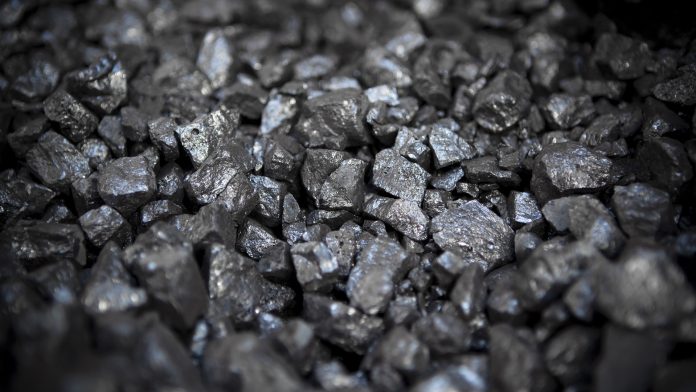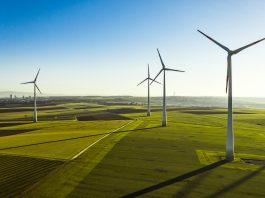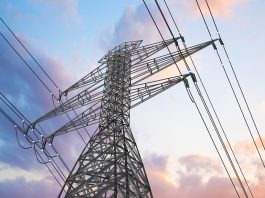A consortium of researchers collaborated on a Clean Circles project to seek iron as a potential carbon-neutral energy carrier to facilitate the large-scale storage and transport of carbon-free energy.
Researchers believe that iron has great potential to contribute to the energy transition. The metal and its oxides could potentially be utilised in a circular system as a carbon-neutral energy carrier to store renewable energy, such as wind and solar power.
How exactly this could work was investigated in a joint project involving TU Darmstadt, Darmstadt University of Applied Sciences, Johannes Gutenberg University Mainz (JGU), and the Cottbus-based Institute of Low-Carbon Industrial Processes of the German Aerospace Center (DLR).
The researchers of the Clean Circles project explore options for storing large quantities of renewable energy, transporting it, and making it available without CO2 emissions – a yet unsolved challenge for the energy transition. JGU’s involvement in the cooperation project is coordinated by its Institute of Political Science. A team led by Professor Arne Niemann, Head of the International Relations unit at the Institute of Political Science, investigated criteria and evidence which shall help to identify and evaluate potential third partner countries for the Clean Circles technology.
Iron as a carbon-neutral energy carrier
The Clean Circles project is based on the idea of storing electrical energy generated from renewable resources in iron, thus making it storable and transportable. In a first step, electricity from renewable energy sources would be used to convert iron oxide to iron for the purposes of storing energy in it. The resultant iron dust could then be stored and transported to generate and supply energy elsewhere.
To do this, iron would be oxidised again, ideally in converted former coal-fired power plants, producing CO2-free electricity. The resulting iron oxide, i.e., rust, could then be transported to locations where renewably generated electricity would be available for the next round of reduction. “This would create a green cycle, a process in which no CO2 escapes into the atmosphere,” emphasised Dr Friedrich Plank of the International Relations unit of JGU’s Institute of Political Science.
Insufficient supply of green energy
One drawback is that there is insufficient green electricity available in Germany, which would be required to keep the cycle running. Therefore, an idea being considered is whether the reduction process can ideally take place in third countries where wind or solar energy is available in larger quantities.
“These could also be countries outside the EU. In the end, what happens will depend on specific factors and political decisions,” explained Dr Johannes Muntschick, who is also working in the project, pointed out. It is with this in mind that the political scientists involved in the project are examining which approaches would be both acceptable to society in general and politically practicable.
At present, the methodological and empirical fundamentals required for this analysis are not yet in place. However, these are essential to avoid the same sort of failure suffered by the Desertec Industrial Initiative or to avoid time-consuming disputes, such as on the siting of wind turbines.
“In the preliminary phase it is important to provide the necessary information to ensure the support of the populations on both sides,” added Professor Arne Niemann. He further noted that one should not only consider purely economic factors when choosing partner countries. “The war in Ukraine and the now impending gas shortage are examples that show us that political framework conditions play a key role.”
Analysing the benefits of iron as a clean energy carrier
Such interdisciplinary collaboration of political scientists, natural scientists, and engineering in the field of renewable energy is probably unique. The research undertaken in the political science field was previously concerned with aspects of international cooperation in energy partnerships or development aid policy projects.
However, new ground is being broken by innovative energy projects, such as the Clean Circles technology. To prepare for the dialogue on this new energy carrier and identify major actors and stakeholders, the team at Mainz University observed what has occurred in the case of utilising hydrogen as a clean fuel and the discourses surrounding this issue at the EU level.
“The aim here is to extrapolate the discourse on green hydrogen in Europe to the Clean Circles technology,” Dr Friedrich Plank concluded. The first results were presented to the cooperating partners during a Clean Circles retreat held in June 2022.
Clean circles project
The Clean Circles project was launched in summer 2021. The work of the political science partners in Mainz is being financed by initial start-up funding from the Strategic Fund of the Rhineland-Palatinate Research Initiative. The lively exchange and close cooperation in this project between JGU and TU Darmstadt, here in particular with Professor Michèle Knodt of the Comparative Politics and European Integration research group, exemplifies how well members of the Rhine-Main Universities alliance work together on interdisciplinary future-oriented undertakings.









